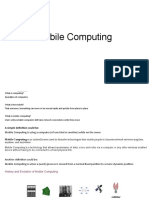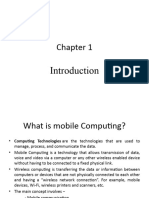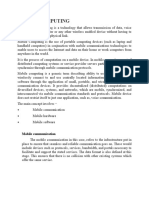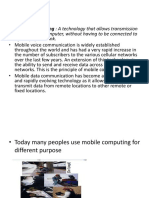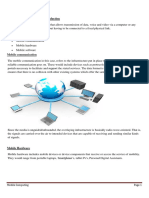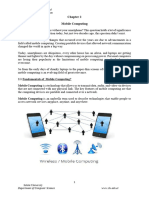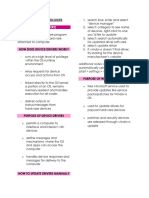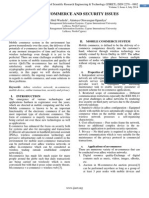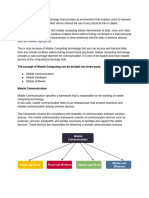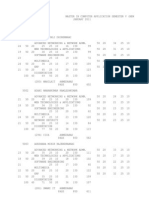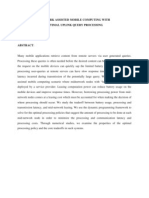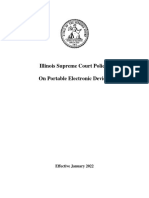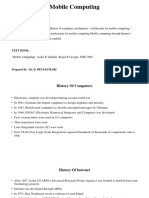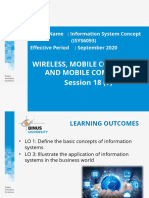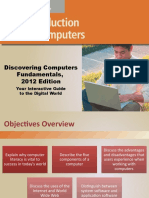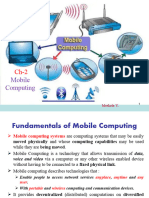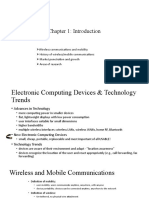0% found this document useful (0 votes)
25 views43 pagesWCMC Chapter 2 - Mobile Computing - Concise
The document discusses mobile computing, which enables data, voice, and video transmission via wireless devices without fixed connections. It covers aspects such as mobile communication, hardware, software, advantages, and future trends, highlighting the evolution of devices like smartphones, tablets, and PDAs. Additionally, it addresses challenges and issues in mobile computing, including security, battery consumption, and the need for efficient bandwidth.
Uploaded by
genet211623Copyright
© © All Rights Reserved
We take content rights seriously. If you suspect this is your content, claim it here.
Available Formats
Download as PPT, PDF, TXT or read online on Scribd
0% found this document useful (0 votes)
25 views43 pagesWCMC Chapter 2 - Mobile Computing - Concise
The document discusses mobile computing, which enables data, voice, and video transmission via wireless devices without fixed connections. It covers aspects such as mobile communication, hardware, software, advantages, and future trends, highlighting the evolution of devices like smartphones, tablets, and PDAs. Additionally, it addresses challenges and issues in mobile computing, including security, battery consumption, and the need for efficient bandwidth.
Uploaded by
genet211623Copyright
© © All Rights Reserved
We take content rights seriously. If you suspect this is your content, claim it here.
Available Formats
Download as PPT, PDF, TXT or read online on Scribd
/ 43


